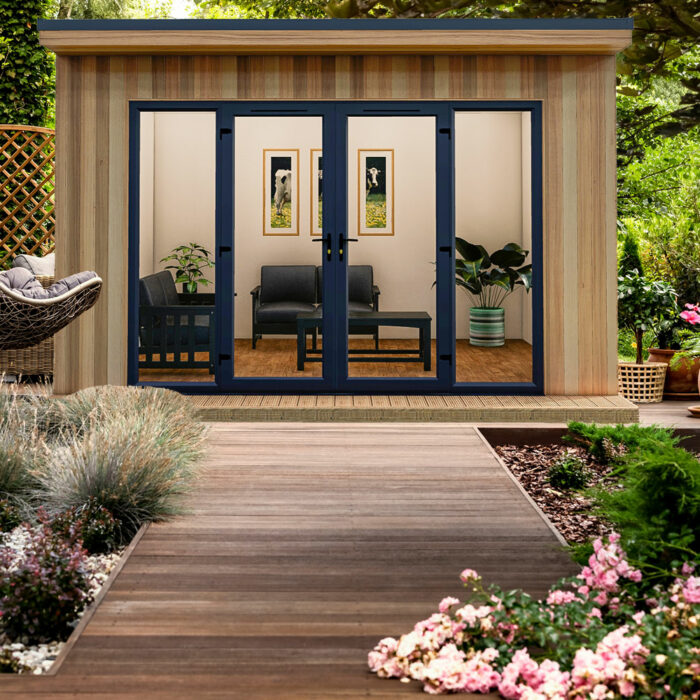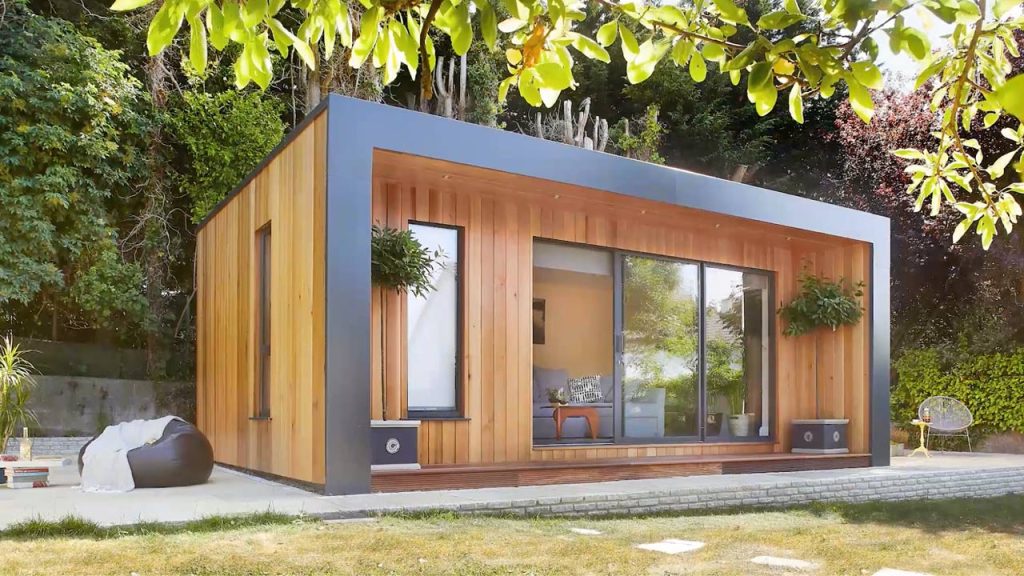Great Tips On Planning Permission On Garden Rooms
Great Tips On Planning Permission On Garden Rooms
Blog Article
What Kind Of Planning Permit Would You Need To Build A Garden Room Such As In Order To Address Highway Issues?
The impact of highways can affect the need for planning approval when making gardens, conservatories, or outhouses. Here are some key considerations. The visibility and sight lines:
Planning permission is required when the new structure hinders the view of drivers coming into or leaving the property, or affects sightlines at intersections or curves in the road. The planning authority must assess whether a structure could pose a threat to the safety of motorists.
Proximity of the highway
Planning permission is typically required for any structure that is built near the highway. For example front garden rooms, extensions along the street or even extensions in the street. There are strict distance restrictions to ensure that the construction won't interfere with highway operation.
Access and Egress
Planning permission is required to alter access points, like adding driveways or altering existing ones in order to allow for the construction. This ensures that egress and access points are secure and don't disrupt traffic flow.
Parking:
If the new structure will impact existing parking spaces, or requires additional parking an approval for planning is required. The planning authority evaluates whether or not the proposed development provides enough parking, and if it does not create parking congestion on streets.
Traffic Generation
Planning permission will be required for projects that are likely to increase traffic, such the garden offices which are used as offices for business with clients present. The assessment will focus on the effect on traffic volumes and safety.
Impact on Pedestrian Access
If the proposed structure is encroaching on pavements or pedestrian pathways the building must be approved for planning. Making sure that pedestrians' access is not hindered and is safe for pedestrians is a key factor.
Roads and Construction Impacts
It is possible to seek planning permission if construction activities result in an impact on highways. This could include the movement of trucks and temporary obstructions. The planning authority could make conditions for construction work to minimize disruption to roads.
Water runoff and drainage
A second consideration is how the new development will affect drainage and water runoff. This is a concern for the impacts on the highway. Planning approval ensures that the new structure does not create drainage or flooding problems that could negatively impact the road.
Street Furniture and Utilities
Planning permission is required when the construction project affects street furniture or underground utilities. This will be handled by the planning authority, in collaboration with other authorities.
Highway Authority Guidelines
The local highway authority may have guidelines specific to developments close to highways. Planning permits ensure that the regulations are followed to maintain road safety.
Noise and Disturbance caused by Traffic
If the proposed structure is likely to increase disturbance or noise due to traffic (e.g. an office in a garden office that gets deliveries or visits) the planning permit will be required to assess and limit the effects.
Accessibility to public transport
The planning permission is needed for developments that could impact public transport facilities such as stations or bus stops. Impact on public transport users, and integration with the transport system is taken into account.
Highways play a significant role when deciding if you should grant planning permission for conservatories or gardens. The need to ensure that the proposed project does not adversely affect the safety of roads, traffic flow pedestrian accessibility, as well as the overall infrastructure is essential. Talk to the local planner and the highway authority early on in the planning phase to help address any concerns and ensure compliance. See the top rated composite garden room for website info including garden office, composite summer house, ground screws vs concrete base, do you need planning permission for a garden room, costco garden buildings, Tring garden rooms, garden outhouses, outhouse building, small garden office, garden room planning permission and more.
What Planning Permissions Are Required For Garden Rooms, Etc. With Regard To Limits On Height?
The height of gardens and conservatories as well outhouses, office buildings or extensions will determine whether or not a planning permit is needed. These are the main factors that determine height you should be aware of:
The maximum height must not exceed 4 meters for an outbuilding or addition with a double-pitched roof.
If you have a flat roof a single-pitched roofing, or any other kind that has a maximum height, it should not be more than 3 meters. In the case of any other type (flat or single pitched etc. ), the maximum height should not be more than three meters.
Proximity to borders
The maximum building height cannot be more than 2.5 meters if it is within two meters of a property boundary. This includes garden rooms, sheds and other similar outbuildings.
Height of Eaves:
The maximum eaves height (the length from the roof's bottom of the roof) cannot exceed 2.5 meters for any structure.
Conservatories & Extensions
For an extension to the rear of a house with only one story, height cannot exceed four meters. The roof's height and parapet walls are included.
Side Extensions
Extensions that extend to the side of the house should not be taller than 4 meters and must not be larger than half the original width.
Special Roofs
The roof of structures with a roof which is flat are limited to a maximum height of three meters.
Additional Restrictions on designated areas
In areas of Outstanding Natural Beauty, conservation areas and other designated zones, there might be more stringent height restrictions and permits for construction that would typically fall under allowed development rights.
Constructions of National Parks
Similar to designated areas, structures in National Parks may have additional limits on height that require planning permission.
Design for the Roof
Consider the size (excluding chimneys, antennas, etc.). The height of the roof must be considered. If the highest point exceeds the permitted limits of development, planning permission will need to be obtained.
Impact on Neighbours:
Planning permits are necessary even if the structure does not exceed the limit of height. This may be necessary when there is a significant impact on privacy, light or views of neighboring properties.
Maximum Overall Height
A structure's height must not be more than 4 meters. For instance, a backyard with a dual-pitched rooftop is not allowed to be taller than 4 meters at its highest point.
Decking or platforms:
Any platforms or decks that are connected with the structure need to not elevate the surface of the ground by greater than 0.3 meters to avoid needing planning permission.
It is recommended to always contact the local planning authority to learn about any modifications to regulations or specific rules. Even if a development is in the scope of permitted development rights, local modifications or specific property conditions may require permission for planning. Check out the most popular Tring garden rooms for website info including outhouse uk, garden office electrics, garden room permitted development, garden rooms near me, ground screws vs concrete, outhouse garden rooms, costco garden buildings, what size garden room without planning permission, do you need planning permission for a garden room, best heater for log cabin and more.
What Are The Location Restrictions For Garden Rooms, Etc?
The location of garden rooms or conservatories, along with outhouses, office buildings, and garden offices could be a major factor in determining whether planning permission is required. Here are the most important location requirements to take into consideration.
Within 2 meters of your property boundary, any building must not exceed 2.5 meters. If the building's height is higher than that limit, then planning permission is required.
Front of the property:
Planning permission is usually required for buildings built in front of a home's primary elevation (the side that faces the front) as permitted development rights don't allow for forward extensions.
The Property's Aspect
Side extensions are required to conform to certain size and height restrictions. They usually require approval from the planning department if they go beyond the existing wall on the side of the house.
Back of the Property
Size and height restrictions apply to garden rooms and extensions to the rear of the house. If they exceed the permitted limits for development, permits for planning must be obtained.
Designated Zones
In National Parks, World Heritage Sites and Areas of Outstanding Natural Beauty there are stricter rules. Any new structure may need planning permission, regardless its size.
List Buildings
The properties that are listed are subject to strict rules. Planning permission and listed-building consent are usually required to build a new structure or modify the existing structure, irrespective of where it is situated on the property.
Green Belt Land:
The green belt is protected through strict rules on the construction of buildings to ensure open space. In most cases, permits are required for construction or major modifications.
Zones at risk of flooding:
The construction of the new building must not increase flooding risks when the property is in a high-risk flood zone. Planning permission, and perhaps an assessment of risk for flooding could be required.
Urban vs. Rural settings
Urban areas usually have different rules from rural areas. For instance, rural homes might have less restrictive restrictions on the dimensions and position of outbuildings however, this isn't the case for all.
Highways, Public Rights of Way and Public Rights of Way
Planning permission may be needed in the case of structures that are located in close proximity to highways, public rights-of way or roads, to ensure that it does not obstruct safety, views, or hinder access.
Shared Ownership and Leasehold Land
If you have a house that is leasehold or part of a shared ownership scheme it is possible to seek additional permission from the owner or the managing entity. There may be a need for permission to plan your property based on local laws.
Nearby to other structures:
It could be necessary to obtain planning permission if an upcoming structure is to be constructed near the existing buildings or structures, particularly on neighbouring property. This will ensure that the building or land adjacent to it does not suffer any negative effects.
You should always consult the local authorities on planning for specific advice on the location of your home and property. The regulations vary widely based on local policies. The compliance with all applicable restrictions will assist you in avoiding legal problems as well as potential fines. Take a look at the top garden room height planning permission for site tips including how to get power to a garden room, what size garden room without planning permission, garden room, what is a garden room, outhouse garden, garden rooms, costco outbuildings, 4m x 4m garden room, garden room conservatory, garden rooms hertfordshire and more.